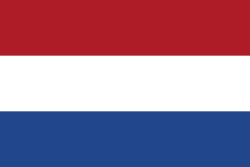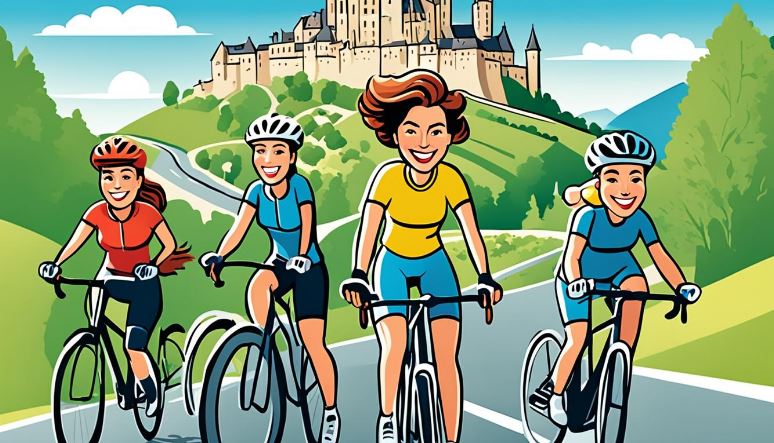Women vs Men Cycling Statistics in France

Ever noticed fewer women cycling in France? This isn't just an observation. It's supported by data. In France, women cycle 54% less than men. This shows a global trend where men cycle more than women. [1] This imbalance makes us wonder why and if we can change it.
A survey in June and October 2023 asked 12,576 people aged 11-85 about their cycling. It found that women cycle less than men. This study and data from Strava show how few women cycle in France.
Cycling in France is changing, but it's slow. In 2019, only 5% of trips in Paris were by bike. [2]
This shows there's a big chance to grow cycling, especially among women. We need to understand why women don't cycle as much to encourage them more.
Key Takeaways
Women in France spend 54% less time cycling than men
Globally, there are 3-4 times more male cyclists on roads than female cyclists
A survey of 12,576 French respondents provides insights into cycling habits
Paris had a cycling modal share of only 5% in 2019
Understanding gender disparities is crucial for promoting cycling equality
Introduction to Cycling Culture in France
Cycling in France has a long history and is a big part of the country's culture. People enjoy leisurely rides in beautiful landscapes and watch intense races. We'll look at how cycling affects French society, including its history, impact, and how it relates to gender.
Historical Context of Cycling in France
The French have loved cycling since the late 1800s. The modern bike changed how people moved around. By 1975, cycling fans started CADR in Strasbourg, and FUB in 1980, to fight for cycling's rights and better roads. [3]
Importance of Cycling in French Society
Cycling is more than just getting around in France; it's a lifestyle. In Strasbourg, 24% of trips are by bike, the most in France. This is much higher than in Mulhouse and Tourcoing, where it's only 2% and 1%. [3] The love for cycling changes a lot depending on where you are, due to the roads and how people see cycling.
Overview of Gender Disparities in French Cycling
Even though many people enjoy cycling, men are still more common in professional cycling. Women face hurdles in getting involved and being recognized. Only 19% of jobs in the cycling industry are held by women. [4] These differences show the need for more support and efforts to get more women into cycling.
Demographics of Cyclists in France
In France, more people are using bicycles. A big 70% of the French own a bike, and 65% ride one yearly. [5] This shows how big a part of French life cycling is.
In Paris, cycling has grown a lot. Now, 11.2% of trips in the city center are by bike, up from 3% in 2010. [6] This shows more people are choosing to cycle in the city.
Men and women cycle differently in France. In Ile-de-France, men make up 60% of bike trips, even though they're not the majority. Women, who make up 51.7% of the population, only do 40% of the biking. [7] This shows we need to get more women cycling.
There's a big difference in how men and women cycle in France. But, things are getting better. From 2010 to 2018, more people in Greater Paris started cycling daily by 30%. [7] This is a good sign for making cycling more for everyone.
Demographic | Percentage |
French population owning a bicycle | 70% |
Population that rode a bicycle in the last year | 65% |
Bike owners using cycling for work commute | 8% |
Men's share of bike trips in Ile-de-France | 60% |
Women's share of bike trips in Ile-de-France | 40% |
As cities improve cycling paths, more people will cycle. Paris wants to be a "100 percent cycling city" by 2026, spending €250 million on better paths. [6] This will likely make cycling more popular with everyone.
Women vs Men Cycling Statistics in France
In France, cycling shows big differences between men and women. New data shows how women and men cycle differently. It points out the need for more equality in French cycling.
Participation Rates by Gender
The Paris-Brest-Paris race shows how men and women cycle. French cyclists used to be the main group, but now they're about a quarter of all riders. They might even reach 30% soon. [8] Women's part in this race has dropped from 6% in 1931 to 7.24% in 2019. This is less than the 10% goal for the 8000 riders. [8]
Time Spent Cycling: Male vs Female Riders
In France, men cycle much more than women. Women cycle 54% less than men in a year. [9] This gap is seen worldwide, where women cycle less than half as much as men. [9]
Gender Gap in Professional Cycling
The gap isn't just in fun rides. Women are 23% less likely to cycle early in the day and 8% less likely late at night. [9] This shows the big challenge in making cycling more equal for women in France.
Country | Gender Gap in Cycling Time |
France | 54% |
64% | |
UK | 54% |
Germany | 42% |
Japan | 66% |
The Paris-Brest-Paris race is getting older, with riders now 50 years old on average. [8] This could change how we encourage women to cycle in France at different ages.
Factors Influencing Gender Disparity in French Cycling
Our study shows many reasons why women don't cycle as much as men in France. They worry more about safety, like getting hit by cars or being alone on the road. [10]
Also, the lack of safe bike paths in cities stops many from cycling. This is a big problem for women. France plans to spend 350 million euros to make biking safer. [11]
What people think about cycling also matters. Women might not want to cycle because they worry about looking good. And, not seeing many women in cycling jobs or media makes it seem like a men's sport. [10]
Women often have less time to cycle because they do more household and childcare work. This means they don't have as much time for biking, whether it's for getting to work or fun.
A study in Montreal found men are less likely to have bike accidents at crosswalks. This shows that how men and women see safety and behave on bikes can be different. [12]
To make cycling more equal for women in France, we need to act. With new policies and programs, France can help more women cycle and bridge the gap between men and women.
Safety Concerns and Their Impact on Female Cyclists
Safety is a big issue for women cyclists in France. They face unique challenges that make them less likely to cycle. This affects their comfort and how much they cycle.
Traffic-Related Risks
In France, women and men see cycling safety differently. Women often fear accidents when cycling. Drivers think cycling is much harder and riskier than cyclists do. [13] This shows we need better education and roads to make cycling safer for everyone.
Personal Safety Issues
Women cyclists worry a lot about their safety. Sadly, 100% of women in France have faced sexual harassment on public transport. [13] This fear also stops them from cycling more. 35% of women often worry about being harassed while riding. [13] This fear keeps the gender gap in cycling wide.
Importance of Well-Lit Cycling Routes
Good lighting is key for women who cycle. Many women avoid certain paths because they're not well-lit. [13] They also don't like cycling in dark forests at night. So, having well-lit paths is important for making cycling safer and more equal for everyone. [13]
Safety Concern | Percentage of Women Affected |
Fear of accidents | 61% |
Anticipation of harassment | 35% |
Discomfort with contra-flow lanes | 23% |
To make cycling safer in France, we need better bike paths, slower traffic, and more lights. These changes will make cycling safer and help close the gap in cycling between men and women.
Infrastructure and Its Role in Gender Cycling Equality
Quality cycling paths are key to making cities equal for men and women on bikes. In France, how easy it is to cycle varies a lot from city to city. This affects how both men and women enjoy biking.
Paris has improved a lot in recent years. It made over 1,000 kilometers of bike lanes. This made biking better for everyone. [14]
But, men still bike more than women in Paris. Women make up only about 1/3 of VELIB bike-sharing users. [14] We need bike paths that think about women's needs to make biking better for everyone. [15]
Good bike paths need to be well-lit, smooth, and separate from cars. These things make biking safer. That's why more women might start biking if cities made these paths better. [15]
There should be plenty of bike parking at work, shops, schools, and hospitals. This helps everyone, especially women, to bike more. Groups that support biking are now focusing on making it better for women. This shows they know we need bike paths that welcome everyone. [16]
Cultural Attitudes Towards Women Cyclists in France
In France, cycling was seen as a man's sport. This view has shaped how people see women cyclists. It affects how many women cycle and how they are seen in cycling.
Historical Perspectives
Long ago, driving and cycling were seen as men's activities. In France and other Western countries, men cycled more than women. [17] This was due to societal norms and what people expected.
Current Social Norms
Now, attitudes towards women in cycling are changing in France. A study with 2,389 people showed 50.6% were women, with an average age of 40.6 years. [18] This shows more women are cycling. The study also found that regular cyclists don't see big differences in cycling attitudes between men and women. [18]
Media Representation of Female Cyclists
The media shapes how we see women cyclists. While things are getting better, there's still work to do. The idea of "feminine velonomy" - women's ease with fixing and maintaining bikes - is getting noticed. [17] We need more women in cycling culture.
Aspect | Male | Female |
Study Participation | 49% | 50.6% |
Mean Age | 44.9 years | 40.6 years |
Attitude Differences | Small or non-existent among regular cyclists |
Even with progress, women still face barriers in fixing and maintaining bikes. [17] We need to work on this to make cycling more equal in France. This will help create a more welcoming cycling culture.
Comparison with Other European Countries
Looking at France's cycling gender gap and how men and women cycle, we see it's good to compare with other European countries. France's cycling culture is big, but it's not as big as some neighbors in getting people to cycle and making it equal for men and women.
In France, only 3% of people use bikes or scooters to get around in 2019. Also, 18% of French people said they cycle once a week, which puts France at 24th out of 28 European countries. Daily cycling is at 5%, way less than in the Netherlands (43%), Denmark (30%), and Finland (28%). [19]
How far people cycle each year varies a lot in Europe, from 30 km to 900 km. Germany saw a big jump, adding about 150 km more per person than before. [20]
Even though cycling is different for men and women in Europe, the gap is clear in how often people cycle and watch professional cycling. For example, the 2023 UCI Cycling World Championships had 1.8 million viewers for the men's race in France. But only 1 million watched the women's race. [21]
Country | Daily Cycling Rate | Weekly Cycling Rate |
Netherlands | 43% | 75% |
Denmark | 30% | 70% |
Finland | 28% | 65% |
France | 5% | 18% |
France might not be a leader in cycling, but some cities are doing well. Strasbourg, Bordeaux, and Paris are in the top 10 for bike-friendly cities in Europe. [19] This shows that some cities in France are trying to make cycling better for everyone, including women.
Initiatives Promoting Women's Cycling in France
France is seeing more efforts to make cycling more equal for women. Many groups and programs are working hard to get more women into the sport. They aim to boost women's participation in both fun and serious cycling.
Government Programs
The French government is supporting women's cycling with special programs. One key program is "A Bicycle for All." It gave almost 250 free bikes to poor kids and trained 154 women for a big cycling event in Rotterdam. [22] This effort is key to making cycling more equal by giving women from all walks of life a chance.
Non-Profit Organizations' Efforts
Non-profits are also playing a big role in making cycling more equal for women in France. The European Cyclists' Federation started the "Women in Cycling" (WIC) program. It drew over 550 people to its online launch. [23] In just three weeks, 270 women joined a special online group, and more than 750 women joined a LinkedIn group for women in cycling. [23] These groups help women in different parts of cycling work together and support each other.
Grassroots Movements
Grassroots movements are growing in France's cycling world. The "Little Riders" program taught 3,500 kids how to cycle in 2022 and gave 330 balance bikes to schools and centers. [22] "Elles Arrivent!" is another great effort. It's for 48 young girls from France, helping to grow the next generation of women cyclists. [22]
Initiative | Impact |
A Bicycle for All | 250 charity bicycles donated, 154 women prepared for Grand Départ |
Women in Cycling | 550+ launch participants, 270 Expertise Portal members, 750+ LinkedIn members |
Little Riders | 3,500 children introduced to cycling, 330 balance bikes donated |
Elles Arrivent! | 48 young female cyclists involved |
These efforts are really helping to promote women's cycling in France. They're making the cycling world more welcoming and diverse for everyone.
Impact of COVID-19 on Cycling Gender Gap in France
The COVID-19 pandemic changed how people in France cycle. In Paris, more people started biking after the first lockdown from May to July 2020. [24] This was because of new bike lanes, caring for the environment, and avoiding crowded buses and trains. [24]
In Europe, cities with COVID cycle lanes saw more cycling. [25] Data from 11 EU countries showed an 8% increase in cycling from 2019 to 2020. Weekend cycling went up by 23%. [25] This shows people changed how they travel because of the pandemic, choosing to cycle for fun and health over going to work.
The pandemic made more women start cycling in France. With fewer cars on the road, streets became safer for women to bike. This change was seen in other countries too, which could mean fewer differences in cycling between men and women.
Time Period | Weekday Increase | Weekend Increase |
2019 to 2020 (EU) | 8% | 23% |
2019 to 2020 (USA) | 10% | 29% |
The pandemic did more than just increase cycling numbers in France. It showed that with less traffic, more women might cycle. This underlines the need for better bike paths to make cycling more equal for everyone. [24,25]
Professional Cycling: Gender Disparities in French Teams
In France, professional cycling shows big gender gaps. Only 3% of Olympic sport federation presidents are women, and 36% are female vice-presidents. [26] Female coaches make up just 27% of all Olympic sport federation coaches. [26]
The Tour de France Femmes avec Zwift, back in 2022, has brought more attention to women's cycling. It drew 3 million viewers on French TV for the first stage, less than the men's tour's average. [27] But, there's still a big gap in how much money women and men earn.
The prize money for men and women's races shows a big difference. Men's Tour de France had a €2.2 million prize, with the top winner getting €430,000. Women's race had a €250,000 prize, with the top winner earning €50,000. [27] This shows the big challenge in making cycling equal for men and women.
Aspect | Men's Tour de France | Women's Tour de France |
Total Prize Fund | €2.2 million | €250,000 |
Winner's Prize | €430,000 | €50,000 |
Average TV Viewers | 3.8 million | 3 million (Stage 1) |
There are efforts to fix these gaps. Female World Tour riders' minimum salary went from $21,000 in 2020 to $31,000 in 2022. [27] The goal is to match men's pro minimum by 2023. With more TV coverage and sponsorships, cycling in France is slowly changing.
Economic Aspects of Gender Cycling Gap in France
In France, the cycling industry faces a big challenge with the gender gap. Men cycle more than women, which changes the economy of this sector. [28] This difference affects how people join, marketing, and the economic benefits.
Bike Industry Marketing Strategies
France's cycling industry needs a new plan. Women feel less safe and worry more when cycling with men. [28] Marketing should focus on safety and designs that women like.
Economic Benefits of Increased Female Participation
More women cycling could bring big economic gains. Only 8% of young women (15-24) are active, compared to 19% of young men. [29] This could make the bike industry grow by reaching more customers.
Gender Pay Gap in Professional Cycling
Professional cycling in France also has a big pay gap. A study found that men get paid more in sports, including cycling. [29] This shows bigger issues in sports media, where women's sports get little airtime. [29] Fixing this could open new economic chances in professional cycling.














![[AOBC] AO Booster](/web/image/product.product/1037/image_256)
![[ATP] Energy Surge](/web/image/product.product/1055/image_256)